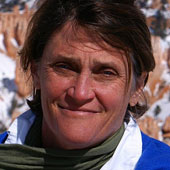Getting Uganda Right (Part I)
How did Uganda’s colonial experience set the stage for its current battle with poverty and corruption?
January 25, 2007
The Last King of Scotland is based on a novel about a young Scottish doctor named Nicholas Garrigan (James McAvoy), who arrives in Uganda in the early 1970s and becomes Amin's (Forest Whitaker’s) personal physician. Garrigan is fictitious. Amin is real.
The story is about how the young doctor, like the people of Uganda, is at first taken in by Amin's charisma and promises of roads, schools and prosperity. With time, Amin grows increasingly paranoid and violent, killing some 300,000 people and wreaking havoc on Uganda's potential as Africa's economic power house.
Garrigan, in turn, grows increasingly disenchanted by and afraid of Amin, ultimately fleeing the country. Although the film suggests that Uganda's nightmare ended with Amin's exile, all that really changed in Uganda after Amin was that the world stopped paying attention to the atrocities there.
While the world switched its focus to Rwanda, Somalia and Sudan, the violence in Uganda continued in one form or another to this day, with more than a half million people killed in the past four decades.
All this killing actually dates back to 1962, when Uganda gained its independence from Britain and Milton Obote became Uganda's first “President for Life.” Obote struck out against the Baganda people of the south because of their close ties to the British, who had set up a federalist system in Uganda that heavily favored the Baganda over the more dispersed tribes of the north.
The Baganda were, for example, granted a privileged state-within-a-state in exchange for helping the British to administer the country. Meanwhile, the Acholi people of the north were treated as a source of cheap labor and recruits for the military.
They were denied the same access as the Baganda to education, government jobs and infrastructure.
Both Obote and Amin came from the north, which even today is far less developed than the south. Gulu is the largest town in the north. It consists of four streets and two bars connected to the only hotels in town. There are no stop lights and no movie theaters. Most of the people in the area have no electricity or running water and very little, if any, education.
As faithfully documented in the movie, Idi Amin first served in the British Army, where he gained his affection for Scotland, before becoming commander of the Ugandan Army under Obote.
In this role, Amin first helped Obote secure power through the use of force and then in 1971 overthrew him in a military coup. The Ugandan people were at first so happy to be rid of Obote that they greeted Amin with joy. Although devastating for the economy, they were also pleased when he expelled Uganda's Asian business community from the country and assumed all their assets as his own.
By 1974, however, Amin was fully engaged in a reign of terror, focused primarily on Obote's homeland, the Acholi districts of northern Uganda. Just as the fictitious doctor in the film is overwhelmed by the violence Amin wrecks on the country, so are the Ugandan people in reality.
While the people expected a new beginning with Amin's ouster in 1979, it is not what happened. Uganda's nightmare continued.
Obote returned from Tanzania and reassumed power. This time, he focused his wrath on the Luwero Triangle, an area above Kampala, where Yoweri Museveni's guerilla movement, the National Resistance Movement (NRM), was hiding. Over a period of six years, Obote conducted a blood bath against the supposed supporters of Museveni, killing as many as 500,000 people and sending more into refugee camps.
After Obote was deposed for a second time in 1985, Museveni assumed power and the violence shifted back to the Acholi regions of northern Uganda. Convinced that Museveni would take revenge against the Acholi, the Acholi elders gave Joseph Kony, a former Catholic altar boy from a village near Gulu, the green light to form the so-called Lord's Resistance Army (LRA) and take on Museveni.
This decision resulted in a full-scale war based in the north between Kony and Museveni that has continued for the past 20 years.
During this period, over 100,000 people have been killed and approximately 1.6 million people have been placed in refugee camps that are maintained by the government and are far below international camp standards.
The Acholi elders had made a big miscalculation. Museveni turned out to be a far better president of the Ugandan people than his predecessors. He did not take revenge against the Acholi people — as the elders thought he might. In addition, he has made huge advances in turning the Ugandan economy around, at least in the south.
He invited the Asian business community back and adopted a number of pragmatic economic policies that have resulted in an average economic growth rate of 10% in the south. In contrast, Kony turned out to be a menace to the Acholi people. In an effort to gain recruits for the war and feed his army, he so terrorized the people in the north that the Acholi elders ultimately turned against him.
Even without the support of the Acholi, Kony managed to keep the war going by winning the support of the government of northern Sudan. It saw him as a counterweight to Museveni, who was supporting the Acholi people of southern Sudan in their war against northern Sudan.
When the war in Sudan ended in 2002, Kony lost his base of support in Sudan and moved to northern Congo, where he resides to this day with an estimated 2,000 troops, many of whom are children.
Editor’s note: You can read Part II of this piece here.
Read previous
One Last Shot in the Middle East
January 24, 2007
